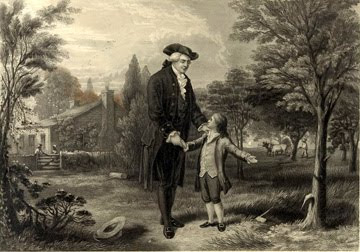 I wrote about Purim a couple of weeks ago in a post in which I announced that Kosher.com was giving away a tin of hamantaschen to a lucky reader of this blog. (I hope it has arrived on her snowy doorstep!)
I wrote about Purim a couple of weeks ago in a post in which I announced that Kosher.com was giving away a tin of hamantaschen to a lucky reader of this blog. (I hope it has arrived on her snowy doorstep!)I noted then that Purim is probably the most festive day in the Jewish calendar. Like most Jewish holidays it has a dark side: Queen Esther’s victory over the nasty Haman and her salvation of the Jewish people came only after long persecution.
We wouldn’t appreciate the happy days without the sad ones, however, so I still love to celebrate it. I enjoy being Queen Esther for the day. I just don’t get to wear a crown often enough!
Here’s a recipe for hamantaschen so that those of you who didn’t win them (or order them) from Kosher.com can still join in the festivities. Purim will fall this Sunday, February 28, so you still have a day or so to stock up on ingredients.
My mother and I made a batch yesterday as the snow fell outside. I was a little nervous about the dietary consequences of being snowed in with a batch of cookies, but fortunately the boys next door had friends visiting so we managed to give away quite a few of the hamantaschen.

This recipe is basically a sugar-cookie dough with fruit filling. If you like your dough a little less sweet, try this recipe from Kosher.com. If you keep kosher or want to avoid dairy products, you may use margarine in your cookies, but the butter is a lot more flavorful.
Next year, I’m going to try making savory hamantaschen filled with cheese—mmm. Meanwhile, these are pretty darn good.
Pedants among you may be wondering about the singular of the word “hamantaschen.” One of these cookies is called a “hamantasch.” Most people bake more than one, however, so you won’t need to use the word “hamantasch” frequently.
Dress up, sing songs, drink a few goblets of your favorite tipple (mine is diet soda), and enjoy these traditional triangular cookies. Happy Purim!

Hamantaschen
Ingredients:
3/4 cup (1-1/2 sticks) sweet butter at room temperature
3/4 cup sugar
1 egg
1 tablespoon orange juice
1 teaspoon vanilla
1 teaspoon baking powder
1/2 teaspoon salt
2 cups flour plus a little more for patting out the cookies
jam as needed for filling (between 1/2 and 1 cup); we tried both apricot and raspberry
Instructions:
Preheat the oven to 350 degrees. In a bowl cream together the butter and the sugar. Beat in the egg and mix well.
Beat in the orange juice and vanilla, followed by the baking powder and the salt.
Stir in the flour and continue to mix gently until all of the ingredients are blended.
On a floured board pat about a third of the dough down to a thickness of 1/4 inch. Use a biscuit cutter, glass, or clean can to cut the dough into circles. Repeat with the remaining dough.
Place the circles at least a couple of inches apart on parchment-lined baking sheets. Place a tiny bit (about 1/2 teaspoon or maybe just a LITTLE more) of jam in the middle of each circle. (Too much jam will overwhelm your cookies during the baking process.)
Carefully fold the circles into triangles around the jam. This is a little tricky: If your triangles aren’t high-sided enough the cookies will flatten out in the oven. (They’ll taste good anyway, but they ARE supposed to look like a triangular hat.)

Seal the seams of the triangles with cold water.
Bake the cookies until they just begin to brown about the edges, 14 to 18 minutes. You will have between 15 and 20 hamantaschen, depending on the size of your cutting instrument.




















































